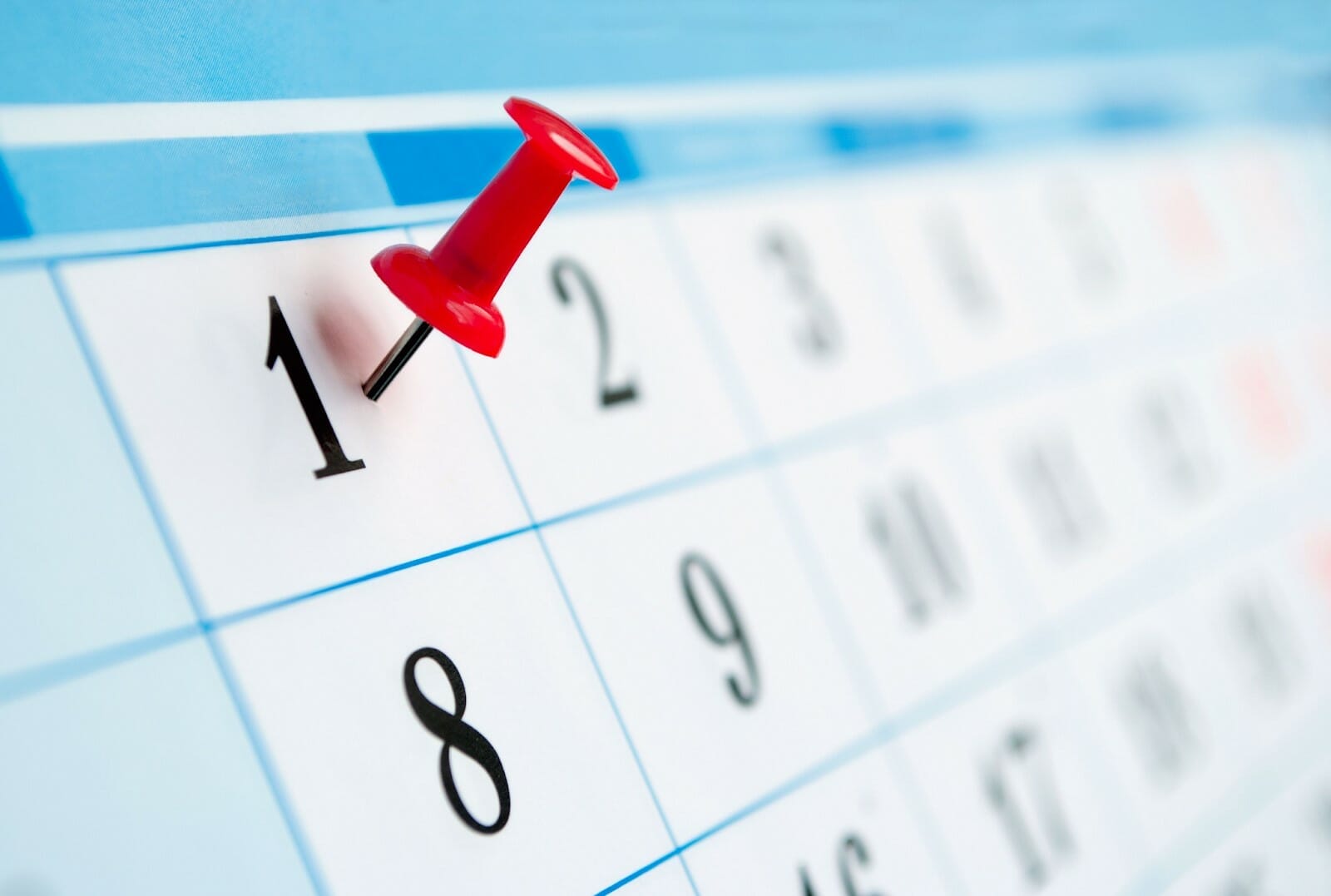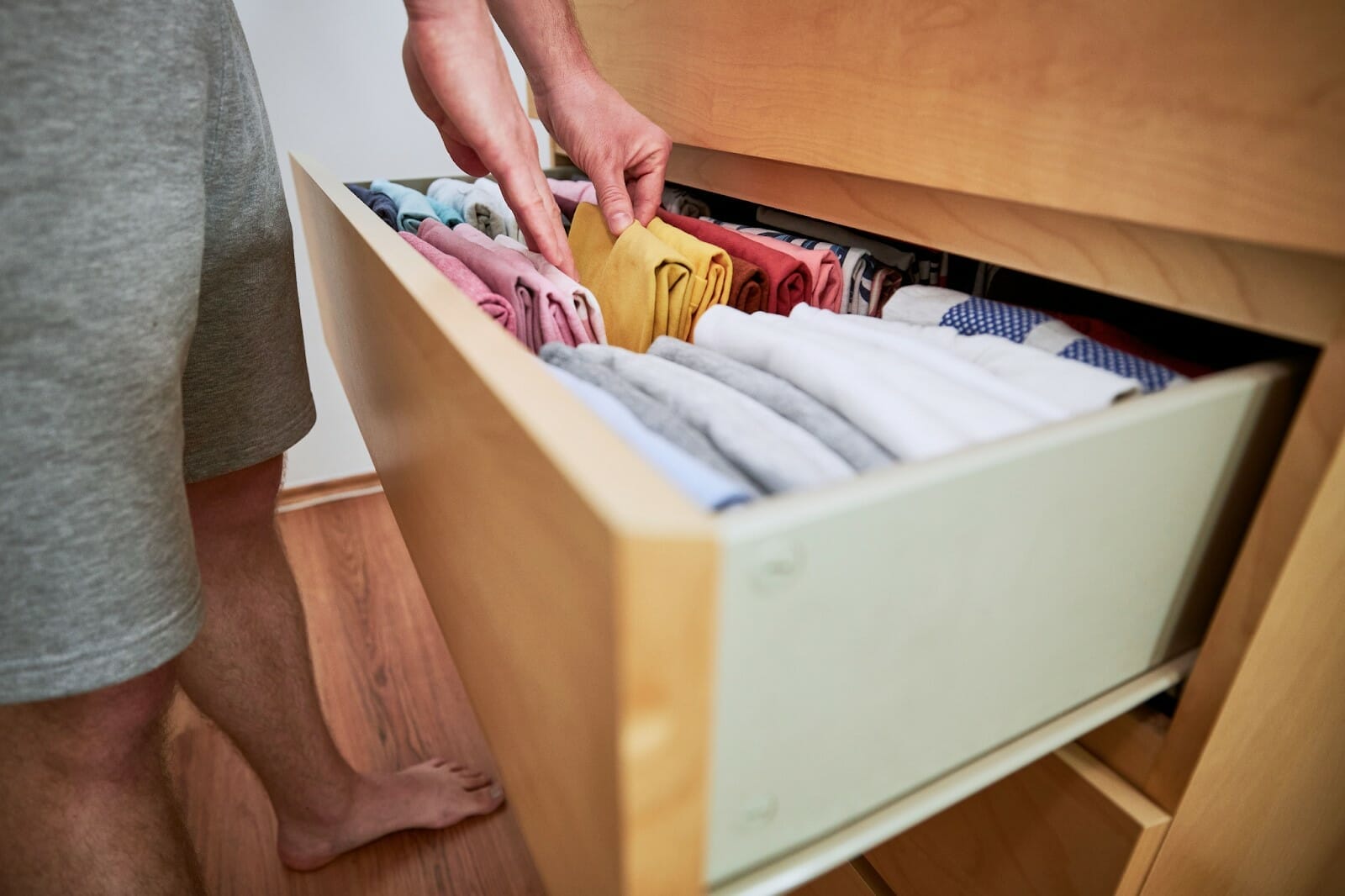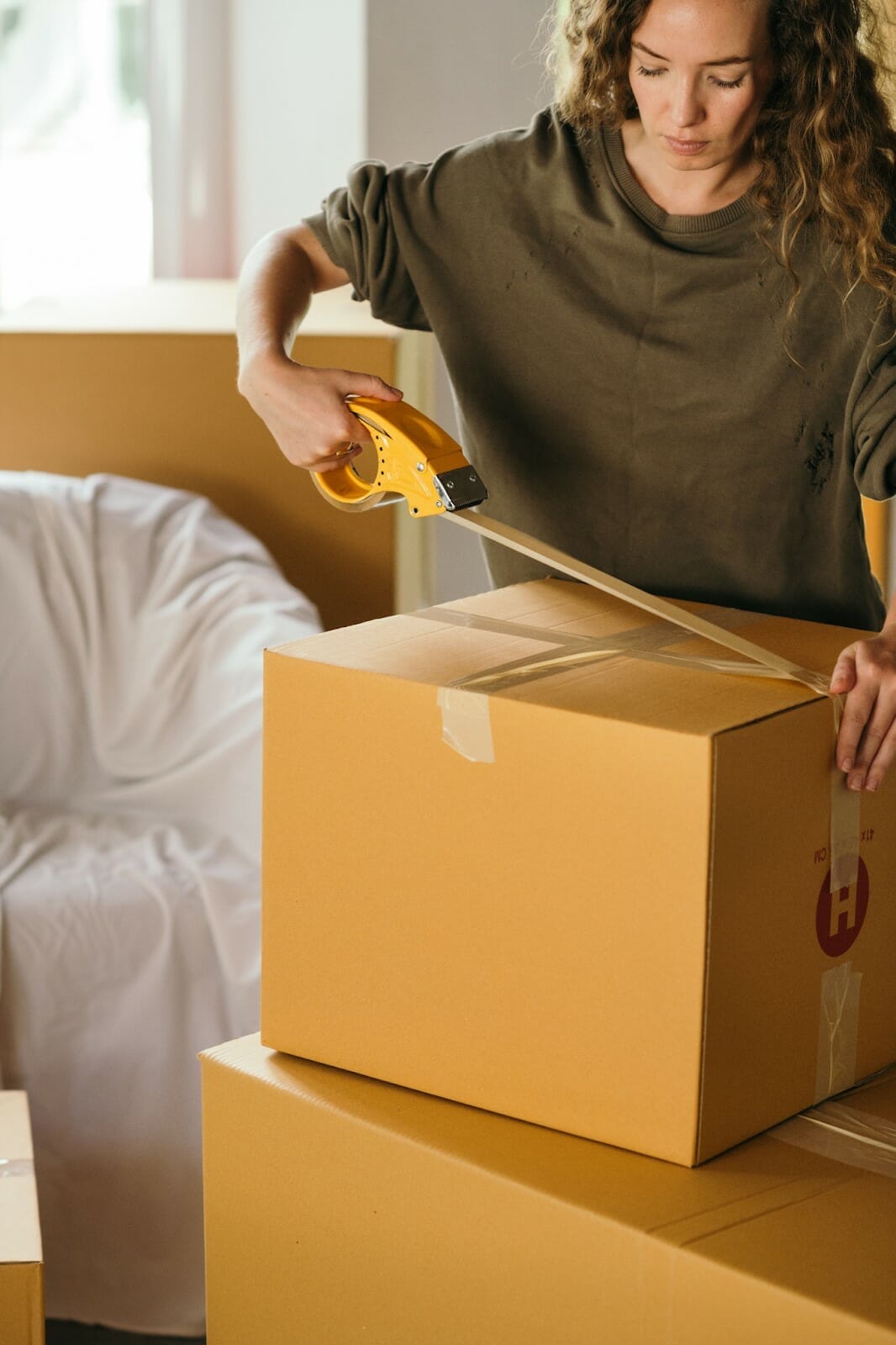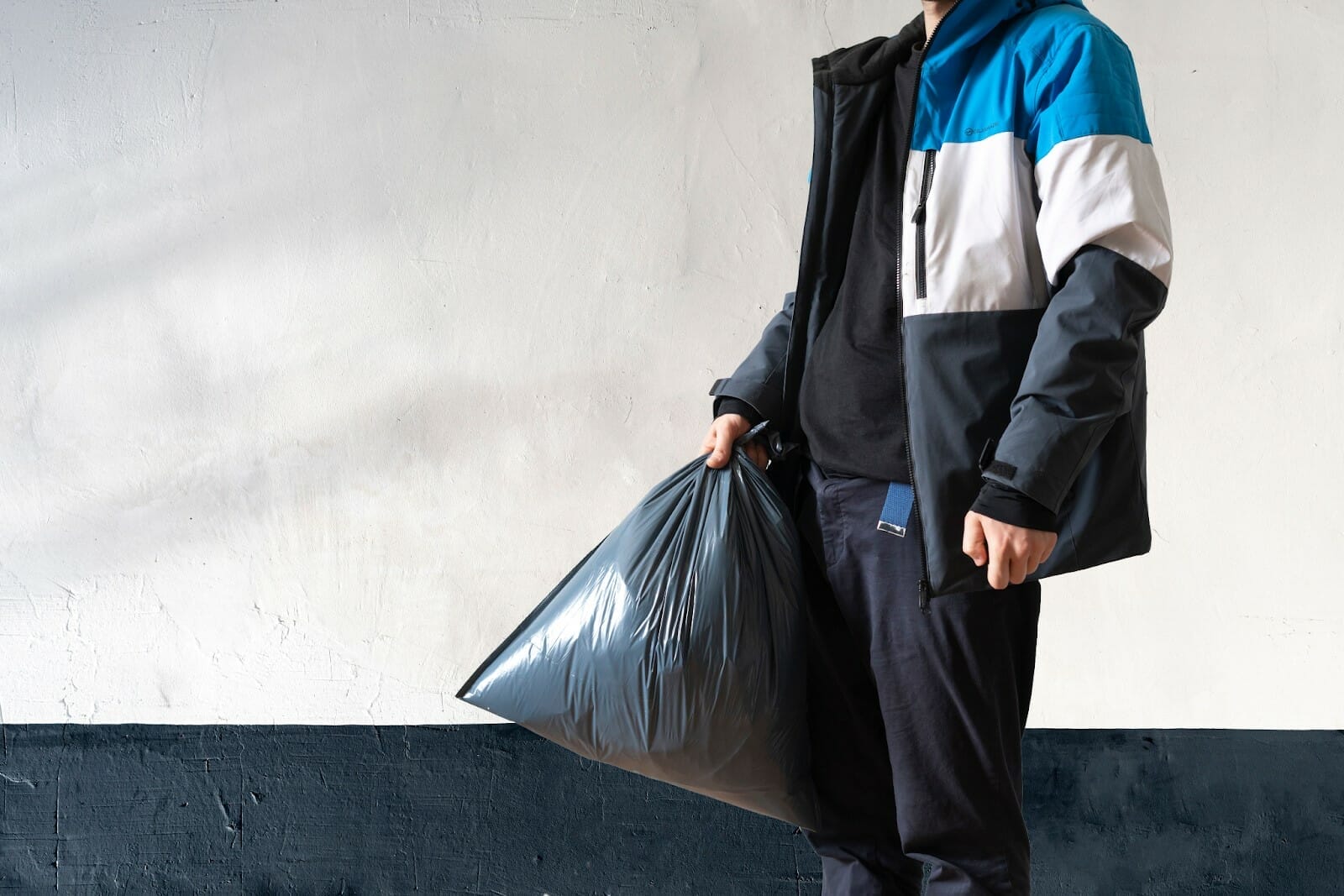Get started on your journey to living in a home that feels comfortable and welcoming.
Here are the 5 steps to efficient cleaning:

Some people may hang onto excess items or animals that can compromise the health and
safety of the home. It’s important to keep up on cleaning and pay close attention to your common trouble spots so your home can remain safe and healthy. Common categories that stack up easily include:
Are you holding onto books you’ll never get to? Do you have stacks of books you will probably never open again?

Do you find yourself stocking up on certain foods, even if you can’t finish them before they expire? Are your cupboards filled with ingredients you don’t use?
Do you have stacks of old documents you don’t need anymore? Can you throw them away, or create a filing system for things you don’t have a digital record of?
Do you have items in your closet that still have the price tags attached? Do you find yourself buying and stowing things you don’t intend to use?

Do you have more animals in your home than you can care for? Sometimes people rescue animals out of compassion, but do not have the space or resources to care for all of them. If you struggle caring for your animals, you may want to evaluate your space and consider finding new homes for some of them.
Do you find yourself searching for free items left in others’ trash, or struggling to part with your garbage? Some people struggle to part with trash, whether their own or what they’ve found. However, trash can quickly create dangerous health situations by attracting pests.
Once you’ve identified what you want to change, it’s easy to get carried away with lofty plans. However, if you try to do too much at once, you can get overwhelmed and give up quickly.

Don’t expect to finish everything in one weekend. Remember, it’s a process!
Rather than saying you’ll finish the entire house by a certain date, give yourself smaller deadlines and plenty of space. If you’re not sure how long something will take, set a daily habit goal for yourself. You can set a timer for 5-15 minutes, returning to the same area each day until it’s finished.
Decluttering your home is a marathon, not a sprint! Don’t burn yourself out at the beginning. Keep it small, steady, and consistent.
Sometimes the hardest part of undertaking a big project is getting started! Get the momentum going by deciding what your first step will be.

Make it easier on yourself by picking a spot you can finish quickly. Accumulating some wins will help you feel good about your progress and strengthen your motivation and confidence.
Breaking your goals down into bite-size, achievable increments is a great strategy. Rather than saying “I’ll clean the bathroom first,” focus on decluttering the top drawer.
Once that is finished, pat yourself on the back and move on to the next drawer.

There are numerous decluttering strategies out there. Below, we’ve compiled what we found to be the most effective strategies for your use. Some will work for your personal strengths and needs, and others won’t.
Keep testing the cleaning methods listed below until you find something that resonates with YOU and helps you achieve your goals.

Each day, choose a drawer or other small space in your home and set a time for 5-15 minutes. Work on that space until your timer goes off, and then move on with your day!
Once you’ve finished a space, you can move on to the next area on your list.
The one-drawer-a-day method works especially well for people with ADHD or others who may quickly get distracted.
Sometimes, we hang onto things for years, thinking we’ll need them eventually. With this method, we introduce ways to track if items have been used in the last year. If not, they’re thrown out or donated.

The next time you’re decluttering, ask yourself if you’ve used an item in the last year. If not, get rid of it.
If you’re sorting clothes, it can be helpful to turn all the hangers backward at the beginning of a season. Once you’ve worn something, you can hang it up the regular way.
Once that season is over, look through the closet and remove all the clothes still on backward-facing hangers—these are the pieces you wound up not using.
No matter how useful something is, having too much is unhelpful. If you have extras of something, donate them. Many organizations take extra items, and sometimes these donations are even tax-deductible.
These organizations are all good options to look into when donating extra items:

OHIO stands for Only Handle It Once. This method is particularly useful for mail and email. Don’t let things pile up. When you open your mail, you have three options:
Once you have a digital record of something, you can throw away the paper copy and know that you’ll never lose it.
Kondo’s method of decluttering involves asking yourself if different items “spark joy.” In her bestselling book, The Life-Changing Magic of Tidying Up, Kondo offers a unique process.
She advises going through your homes, touching each item you own, and asking yourself if it sparks joy. Often, she says, we are attached to our emotions and memories surrounding an object, and we don’t need the object itself to enjoy those emotions and memories.

While going through each individual item can feel overwhelming, as you make your way through the different spaces in your home, take an extra minute with the items that feel hard to part with.
Ask yourself if that item truly sparks joy. If you’re keeping it for any other reason (anxiety, guilt, fear), let it go.
One of the main premises of Swedish death cleaning is consideration for your loved ones who will need to deal with your belongings after your passing.
While it may seem morbid, in reality, choosing to downsize can lighten the burden for others in the future. Swedish death cleaning emphasizes taking your time and mindfully evaluating what you still need.

For the 4-box technique, label four different boxes with:
If you’re keeping it, put it in the keep box.
If you don’t need it but it’s still in good shape, put it in the donation box.

If you don’t need it and it isn’t in good condition to donate, put it in the trash box.
If you need it in a certain season, but not this current season (think baby gear if you’re planning on having another child, seasonal decor, winter clothing, etc.), put it in the store box.
With your four boxes, move to the first space you want to declutter and put items in the appropriate box. Once you’re finished with a space, empty the boxes before you move to the next space. Put away the keep items, throw out the trash items, and so on.

For a motivating win to get your sense of accomplishment up, do a quick 21-item toss.
Grab a trash bag and walk through your house, picking up the first 21 things you see that you don’t need anymore and throwing them away. If you make this a habit, you can quickly clear out things you no longer need and make a big difference in your space.
It’s a great excuse to get up from your desk for a few minutes or fill the time during a commercial break. You can enlist your kids or partner to help too—or race to see who can toss 21 items first!
If you’re saving something for a rainy day, put it on a firm deadline. Box up the items you think you’ll need someday and write an expiration date on the outside of the box.
If you haven’t gone looking for the items by that date, simply donate or throw away the box. Put a reminder in your phone or calendar so you don’t leave the box gathering dust in your garage for years.

For a week-long challenge, choose 7 manageable areas you want to tackle. Each day for a week, clean one of your zones. Make sure these areas are small so you don’t get overwhelmed—you want to set yourself up to win by picking things that can be accomplished in a day!
Sometimes we need to make a few purchases in order to organize our homes. It makes it even harder to clean things up if you’re dealing with:
Finding a storage bin, new hangers, or another organizer to corral these items can make all the difference. But beware, don’t let shopping for organizational solutions become a new way to clutter up your home.
Recognize that if you are constantly buying new bookshelves or storage bins, it’s probably time to go through your items and get rid of some of them.
Getting rid of things can be a painful process, but understanding your reasons for decluttering increases your motivation. Ask yourself these 12 questions to decide if something deserves a spot in your home:

Bio-One Specializes in After-Death, Decomposition, Bodily Fluid & Dead Body Odor Removal
Bio-One is Alabama's leader in Biohazard Cleanup. We aren't just a biohazard cleaning company - we are a compassionate, caring team of individuals whose mission is to help people on which is often the worst day of their lives.
We hope nobody ever needs to contact us, but when they do we respond immediately. We are available 24/7, and will always answer the phone.
Many people don't realize this, but when the police/coroner leaves the home after a suicide, homicide, decomposition or trauma, the family is always left to clean up the aftermath. Oftentimes, there is significant remediation that needs to take place - large items removal, correct biohazardous waste handling & processing, flooring removal, drywall removal, subfloor disinfection, surface disinfection, odor mitigation and many others.
Please don't ever try to clean this up by yourself - always call a professional. Our services are covered by homeowner's insurance, and no one's prices are more affordable than ours.
Bio-One's motto is "Help First, Business Second," and we stand by this motto every day. We are here to help you, please call us anytime. We service Hamilton, Bradley, Meigs, Rhea, Bledsoe, Sequatchie, Marion and all surrounding counties.

We are delighted to announce our sponsorship of the First Responder Relay in Las Vegas on October 16th. The First Responders Relay is a 9 person 48-mile running relay with stages ranging from 4.0 miles to 7.7 miles. The relay is competition comprised of first responder personnel from throughout the United States and the World, and is hosted by the California Police Athletic Federation (CPAF).
There is still time to register, but don't delay! Registration closes September 18. Visit www.CPAF.org to join us in Las Vegas!
Compulsive hoarding is often connected to emotional trauma and distress. That’s why it’s important to never shame someone suffering from this condition and instead to try to understand how they’re feeling. While any size of hoard can impact quality of life, let’s take a look a 5 classic compulsive hoarding symptoms and when you should hire the professional and non-judgemental hoarding clean-up services of Bio-One of Chattanooga.
5 classic complusive hoarding symptoms include:
One of the classic compulsive hoarding symptoms to look out for is when a loved one continues to buy more items, despite having no more space to store them at home. Excessively shopping with no specific reason and filling up every draw, closet, and wardrobe is a tell-tale sign that someone is struggling mentally. Perhaps they are trying to overcompensate for a loss or feel the need to protect themselves by stockpiling items. Try to ask your family member or friend the next time they are shopping the reason why they are buying the items and see if they provide a rational explanation or disregard your interest. Hoarding can be a complex behavior to deal with, and often, hoarders will try to deny that they are exhibiting this behavior in the first place.
Not to be confused with collecting certain items, compulsive hoarding can often involve keeping a collection of invaluable items that might be broken or badly damaged. With no value and no practical use, people struggling with this condition may feel some level of emotional significance to each object or believe that they will need it at some point in the future. This is also linked to the fear of wasting money and so they’re trying to hold onto everything so that they don’t waste money in the future.
If you believe someone has compulsive hoarding behavior, you might notice stacks of disorganized items such as books, newspapers, paperwork, and sentimental objects throughout their home. This clutter and mess is a direct result of their difficulty throwing out and parting with objects, regardless of their value or purpose. If, however, the items are carefully stored and categorized, this is more likely a collection over a hoard.
When compulsive hoarding behavior gets worse, a person may begin to neglect themselves in terms of their personal hygiene as well as ignoring responsibilities to their pets. You may notice animal feces in the home, strong odors, and no clear bathroom facilities for them to shower and wash. This extreme lack of self-care is a massive red flag, and if you notice this, it’s really time to address the issue for the health and safety of anyone and any animals living in the property.
A trauma or stressful life event often triggers compulsive hoarding behavior. This could be the death of a loved one, a divorce or losing items through no fault of their own, such as a fire or flood. Through hoarding, a person may feel protected as they are surrounded by the objects they have bought. That’s why a classic compulsive hoarding symptom is a severe emotional reaction to the process of letting go of any item. But, if your loved one is ready to take back control of their lives, feel free to reach out to our team and hire our professional hoarding clean-up services. professional hoarding clean-up services.
The professionals at Bio-One of Chattanooga are here to help you or a loved one return to a healthy and safe home! We offer free quotes and prompt service! Give Bio-One of Chattanooga a call at 423-902-9858 or visit our website at https://www.ChattanoogaBioOne.com

The California Police Athletic Federation (CPAF) is proud to announce that the 2021 United States Police & Fire Championships (USPFC) are now Presented by Bio-One, Inc.
Operating under the motto, "Help First, Business Second," Bio-One provides high-level decontamination and biohazard cleanup services while offering clients the privacy and compassion needed at difficult times. Bio-One operates in 41 states with over 110 locations and is committed to providing first-class service.
"We are thrilled to add Bio-One as the Presenting Sponsor for the 2021 USPFC because First Responders warrant our support," said California Police Athletic Federation President LC Collins. "Bio-One’s reputation is second to none, and with their partnership, we can offer first responders a health and wellness outlet. We look forward to working with them for years to come."
Founded by San Diego Police Lieutenant Veon "Duke" Nyhus, The United States Police & Fire Championships were first held in San Diego in 1967. Duke recognized the need to promote physical fitness and camaraderie among the Public Safety and First Responder community members.
The USPFC caters to active and retired public safety and first responders who participate in Olympic-style competitions and open to individuals representing firefighters, law enforcement, and officers from corrections, probation, border protection, immigration, and customs across the country. Traditionally athletes compete in 45+ sporting events from biathlon to motocross across 35+ venues in Southern California.
"At Bio-One our support for Law Enforcement and Fire Service Officers is unwavering, and we're thrilled to partner with the California Police Athletic Federation during this memorable event," said Nick-Anthony Zamucen, founder of Bio-One. "We wish each athlete success and look forward to celebrating these everyday heroes."
The 2021 USPFC Presented by Bio-One will take place from June 10th to the 19th in venues across San Diego, California, and strengthen the relationship between First Responders and the community for many years to come!
About the United States Police and Fire Championships
The California Police Athletic Federation (CPAF) is the parent organization of two multi-sport programs designed for peace officers and firefighters. The World Police & Fire Games (WPFG) are open to active and retired law enforcement and fire service personnel throughout the world. The United States Police & Fire Championships (USPFC) are open to active or retired public safety and first responder personnel from an eligible agency within the USA. For more information, please visit www.uspfc.org.

The California Police Athletic Federation (CPAF) is proud to announce that the 2021 United States Police & Fire Championships (USPFC) are now Presented by Bio-One, Inc.
Operating under the motto, "Help First, Business Second," Bio-One provides high-level decontamination and biohazard cleanup services while offering clients the privacy and compassion needed at difficult times. Bio-One operates in 41 states with over 110 locations and is committed to providing first-class service.
"We are thrilled to add Bio-One as the Presenting Sponsor for the 2021 USPFC because First Responders warrant our support," said California Police Athletic Federation President LC Collins. "Bio-One’s reputation is second to none, and with their partnership, we can offer first responders a health and wellness outlet. We look forward to working with them for years to come."
Founded by San Diego Police Lieutenant Veon "Duke" Nyhus, The United States Police & Fire Championships were first held in San Diego in 1967. Duke recognized the need to promote physical fitness and camaraderie among the Public Safety and First Responder community members.
The USPFC caters to active and retired public safety and first responders who participate in Olympic-style competitions and open to individuals representing firefighters, law enforcement, and officers from corrections, probation, border protection, immigration, and customs across the country. Traditionally athletes compete in 45+ sporting events from biathlon to motocross across 35+ venues in Southern California.
"At Bio-One our support for Law Enforcement and Fire Service Officers is unwavering, and we're thrilled to partner with the California Police Athletic Federation during this memorable event," said Nick-Anthony Zamucen, founder of Bio-One. "We wish each athlete success and look forward to celebrating these everyday heroes."
The 2021 USPFC Presented by Bio-One will take place from June 10th to the 19th in venues across San Diego, California, and strengthen the relationship between First Responders and the community for many years to come!
About the United States Police and Fire Championships
The California Police Athletic Federation (CPAF) is the parent organization of two multi-sport programs designed for peace officers and firefighters. The World Police & Fire Games (WPFG) are open to active and retired law enforcement and fire service personnel throughout the world. The United States Police & Fire Championships (USPFC) are open to active or retired public safety and first responder personnel from an eligible agency within the USA. For more information, please visit www.uspfc.org.

If buying or selling a home in Chattanooga, TN is in your future, you're likely well versed the entire process from the initial offer to closing. But are you aware that disclosing a death in the home may be required? Here's what you need to know.
Property Disclosure Documents
No matter how perfect a house looks on the outside, there is often property information a buyer needs to disclose before the sale can go through. Property disclosure documents reveal known structural issues, neighborhood nuisances, hazards, HOA details, water damage, notable repairs made to the home and death in the home.
Rules for reporting a death in the home vary by state, and variations in rules may include:
So what are the rules in Tennesse? Here are the details:
According to T.C.A. § 66-5-207 a homeowner or real estate agent does not have to disclose a death in the home.
Additionally, according to DiedInHouse.com, if a buyer asks, and the seller knows, then they should answer truthfully, but no legal action shall be brought against the seller and agent for failing to disclose. Died In House offers promises to instantly search millions of records to determine if a death has occurred at any valid U.S. address.
For a state by state guide on disclosure laws we recommend visiting this resource on Nolo.com.
Remediating After a Death in a Home
If a death recently occurred in the home you're hoping to purchase, there may have been biohazards from bloodborne pathogens that required remediation. Consider asking the seller how the death was remediated to ensure proper steps were taken. Remediation processes may vary depending on the location of the death, how the death occurred, types of flooring, and if the death was undiscovered for days or weeks.
Bio-One technicians are trained and equipped to properly disinfect biohazards from bloodborne pathogens, and we ensure safe biohazard material handling and disposal. Once the entire area is cleaned of blood and body fluids, we also help property owners restore the location to its pre-incident state.
If you are selling a home and need a biohazard remediated or want to ensure remediation was done correctly, give Bio-One a call. Our experts not only contain and disinfect the dangerous biological materials, we carry out our work in a caring and private manner.
io-One technicians are trained and equipped to properly disinfect biohazards from bloodborne pathogens, and we ensure safe biohazard material handling and disposal. Once the entire area is cleaned of blood and body fluids, we also help property owners restore the location to its pre-incident state.
If you are selling a home and need a biohazard remediated or want to ensure remediation was done correctly, give our team in Chattanooga a call: 423-902-9858. Our experts not only contain and disinfect the dangerous biological materials, we carry out our work in a caring and private manner.
There are several different types of hoarding behavior. From holding onto items that have sentimental worth, to compulsive hoarding which can be closely connected to emotional trauma. In order to tackle hoarding head-on, you first need to understand the type of hoarding you’re facing. Whether you’re trying to support a relative, friend or break the habit yourself, understanding the different levels of this condition is key to resolving issues and maintaining a clean and safe environment.
As professional residential cleaning experts, we offer a non-judgemental hoarding clean-up service to help our clients take back control of their homes. Whether it’s general clutter that’s got out of hand or a significant hoard that is impacting daily life, we are here to help. Knowing which type of hoarding we have been hired to help resolve is important, as we must protect ourselves first. So, here’s how we identify clutter from compulsive hoarding.

This type of hoarding typically involves clutter and we’ll probably see signs of pets within the home. The property will generally be odor-free and safe to enter and for our team to work in. There could be some evidence of pests or an infestation, along with small spills or pet accidents that need to be cleaned up.
When hoarding starts to prohibit entrance to certain areas of the home, or begins to block exits, clutter is getting out of hand. A level 2 hoard tends to come with pet odors, pet dander, and clutter starting to overflow into hallways and other rooms. The bathroom and kitchen may have light to medium mildew and countertops might be dirty and in need of a deep clean. Again pests or rodents might be present and some household devices or whitegoods may no longer be working. The property is no longer functioning as it should as a family home.

This type of hoarding behavior will start to impact the exterior of the property as well as inside the home. We’ll often see items being stored outdoors that are meant for indoor use such as TVs, furniture, and sofas. Appliances might be broken or not functioning as they should. Animals within the property may not be being looked after properly which will result in foul smells and a lot of mess and accidents within the home. The house might also have structural damage. Level 3 hoarding could also involve hazardous materials such as chemical spills, broken glass, and excessive dust and mold.

When hoarding takes over the entire property this type of behavior fits into a level 4 hoard. Our cleaning team may see structural damage, older than 6 months, mold and mildew on walls and floors. We may also notice damaged gutters, hazardous electric wiring, damage to wallboards, and broken windows or doors. With this level, pets tend to have complete free range of the house, and destruction can include chewed and clawed furniture. Rodents and pests will be evident, and the home is no longer safe to live in. Excessive clutter and compulsive hoarding will usually lead to a significant fire risk, exposure to hazardous materials and substances, and no clean surfaces or kitchenware to make food.

Compulsive hoarding at its worst is what we call level 5. This is a step up from level 4 hoarding behavior, and our team will consider a job at the top of our scale if we see evidence of significant structural damage, no water connections, nonoperational sewage systems, infestations, fire hazards, unusable facilities, rotting food and the client is no longer able to use the property as their home. The resident(s) may even be using other means to go to the toilet as their bathroom is no longer accessible.
Whether you believe your hoard is on the lower end of our hoarding scale or right at the top, at a level 5 hoard, don’t panic. As hoarding clean-up professionals we have attended hoards of all levels and sizes, and we will never judge a client based on the level of their hoard. We are simply here to help should you wish to regain control of your situation and improve your quality of life. Feel free to contact our team today about your residential cleaning needs.
Why Poor Mental Health Can Often Lead To Self Harm & Suicide
If you are experiencing self harm thoughts, PLEASE seek help. We want to listen to you! Here are several local resources for you to use.

Suicide is one of the leading causes of death in all age groups across the US. Every 12 minutes, an American citizen sadly commits suicide. For people who have fortunately never experienced a mental health condition, the thought of taking your own life can seem unimaginable.
An estimated quarter of a million people each year become suicide survivors, but are at risk of trying to commit suicide once again. As professional crime scene cleaners, we are hired to assist grieving families in America when a relative or loved one has chosen to end their life. But cleaning up a suicide crime scene never gets any easier. With a deep connection to mental health, we want to discuss why many people spiral into depression that can trigger self harm and in some cases suicidal thoughts. Hopefully, this will help others understand the condition a little better and be aware of the possible signs that someone is thinking of suicide.

When someone begins to suffer from a mental health condition such as social anxiety disorder, post traumatic stress disorder or depression, their self-worth can take a massive hit. Not only are their opinions of the world around them becoming more negative, but they will also likely undervalue themselves and start to feel down about their looks, relationships, career and life in general. Some people may start to self-destruct and self harm by over eating or under eating, depriving themselves of a happy and healthy lifestyle. Other people may turn to substances such as alcohol and drugs. A vicious cycle will start to form and their self-esteem, confidence and self-worth can quickly take a turn for the worst.

Emotions can be difficult to deal with and painful, especially if you are experiencing feelings of worthlessness, guilt, regret or a loss of control. There are many different forms of self-harm, from verbally abusing yourself to psychically hurting your body. All are extremely negative acts to express mental struggle and painful emotions.
If you suspect that a loved one is self harming, it’s important to gently ask them about it and show that you understand and won’t judge them for it. If you believe your loved one is experiencing a crisis, seek professional help;
Call Mental Health America: 1-800-273-TALK (8255) to reach their 24-hour crisis center, or text MHA to 741741.

Sadly one form of self-harm is to commit suicide. However not everyone who attempts suicide actually wants to end their life. Some people who suffer from a mental health disorder feel as though they are a burden on their family and friends, or they experience a feeling of being trapped with suicide being the only way to escape their painful emotions. Suicide is triggered by a mental health condition, but many people don’t realize they are ill before they try to end their life.
This is why prevention and mental health awareness is key to saving lives. The more we understand and treat mental health conditions as an involuntary illness, the better we can care for those suffering in silence. Being aware of the tell-tale signs of suicide might help you to save someone’s life in the future.
Here are some possible signs that someone is planning to commit suicide;
● They’re going through depression, on-going grief, mood swings or anxiety.
● They suddenly become calm after a period of depression. This can be a major red flag that they are considering suicide.
● Withdrawal. They start to isolate themselves from friends and family.
● They have already started to self harm.
● An obsession about death. Talking about dying, death or ending their life.
● Making preparations. Getting their affairs in order is another red flag that someone is thinking of ending their own life.
If you are concerned that someone is having suicidal thoughts, you must seek professional help immediately.
Call National Suicide Prevention Hotline: 1-800-273-8255
References:
Bio-One ranked number one in Entrepreneur magazine’s 42nd Annual Franchise 500 for success in crime-scene and trauma-scene cleaning. This marks the fifth year in a row that Bio-One has been included in the ranking.
Chattanooga, TN – Bio-One ranked number one in Entrepreneur magazine’s 42nd Annual Franchise 500 for success in crime-scene and trauma-scene cleaning. This marks the fifth year in a row that Bio-One has been included in the ranking.
Bio-One is locally owned and operated by Michael Kishigian. Since 2020 they have helped several community members and businesses. Whether it’s helping a family recover from a traumatic situation, cleaning a hoarded house, or keeping businesses open with COVID-19 disinfections. Bio-One is always here to help!
Bio-One provides service in recovery and suicide cleanup, homicide cleanup, hoarding situations, junk removal, deceased animal recovery, feces removal, pest and rodent droppings and more.
“The motto of ‘Help First, Business Second’ attracted me to pursue joining the Bio-One family and I am thrilled to part of a winning team. To me that made the company stand out from everyone else,” said Michael Kishigian, owner of Bio-One. “I have cherished each opportunity to truly make a difference in my community, and that’s what being business is really about.”
The number of Bio-One franchises have increased 145 percent in the last three years with over 100 locations in 41 states.
“We’re honored to be recognized by Entrepreneur,” said Nick-Anthony Zamucen, CEO of Bio-One Inc. “The ranking is a direct reflection of our Bio-One family, strength of our business model, and our ability to consistently deliver care and compassion to our clients.”
Over its 42 years in existence, the Franchise 500® has become both a dominant competitive measure for franchisors and a primary research tool for potential franchisees. Bio-One’s position on the ranking is a testament to its strength as a franchise opportunity.
About Bio-One Inc.
Bio-One Inc. is the first crime and trauma scene cleaning franchise, operating in 41 states with over 100 locations. Bio-One is committed to providing excellent service in recovery and suicide cleanup, homicide cleanup, hoarding situations, junk removal, deceased animal recovery, feces removal, pest and rodent droppings and much more. Each office is independently owned and operated by a member of the local community. For more information about Bio-One, visit us at www.ChattanoogaBioOne.com .

